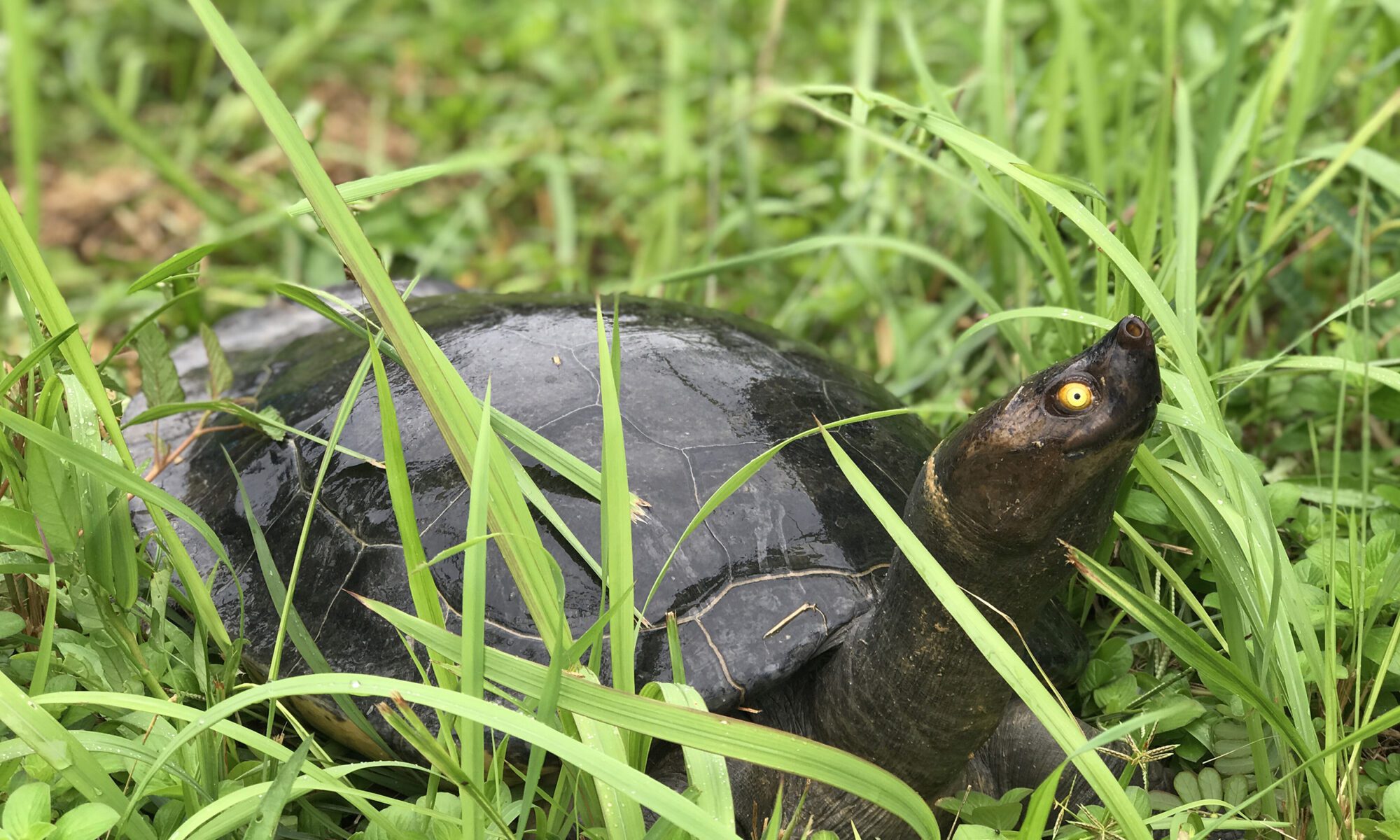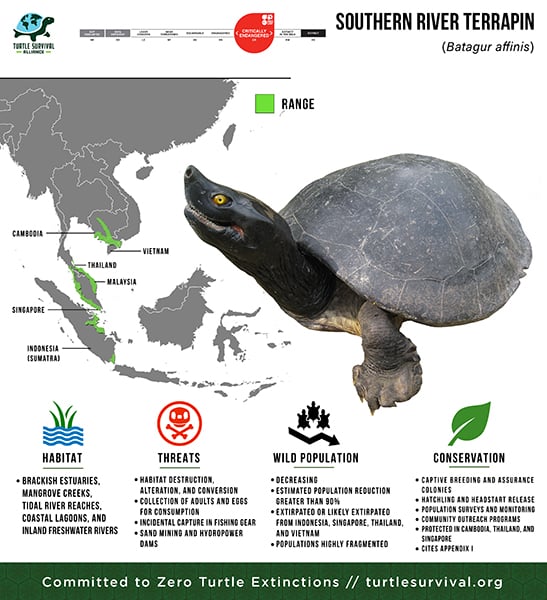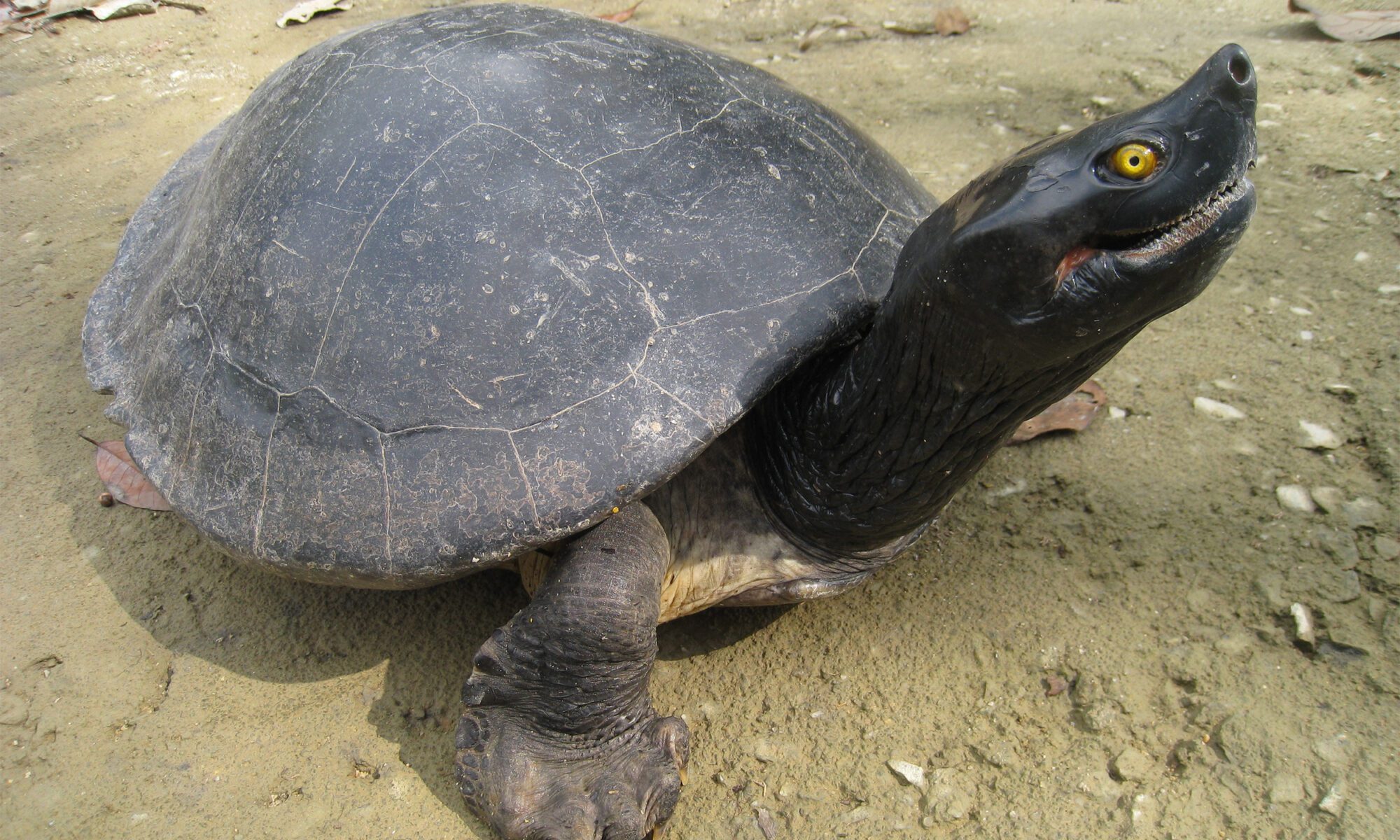
In parts of this species’ range, the adult turtles are protected from consumption as “haram” by Islamic law, the predominate religion of Malaysia. This haram however does not protect the eggs of the species, and over collection of the eggs has resulted in a massive reduction in the recruitment of new turtles into the population. Furthermore, as non-Muslims began populating the region in larger numbers after World War II, the “haram” no longer gave the species the widespread protection it once had in those areas.
The aftermath of wars and regime changes have had a significant impact on this species. During World War II, the Southern River Terrapin was heavily harvested to feed the Japanese soldiers occupying the region. Additionally, untold numbers of this species were collected for market following the fall of the Khmer Rouge communist regime in Cambodia.


